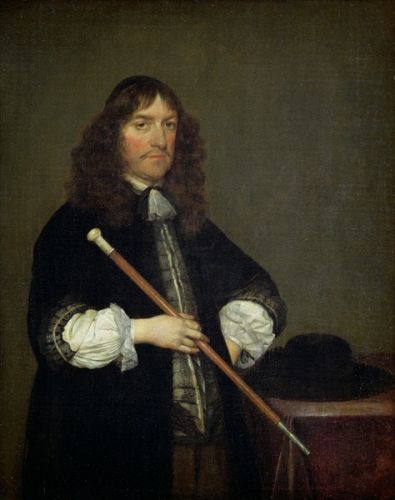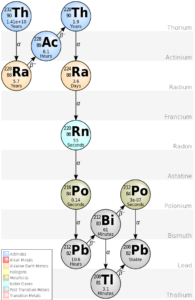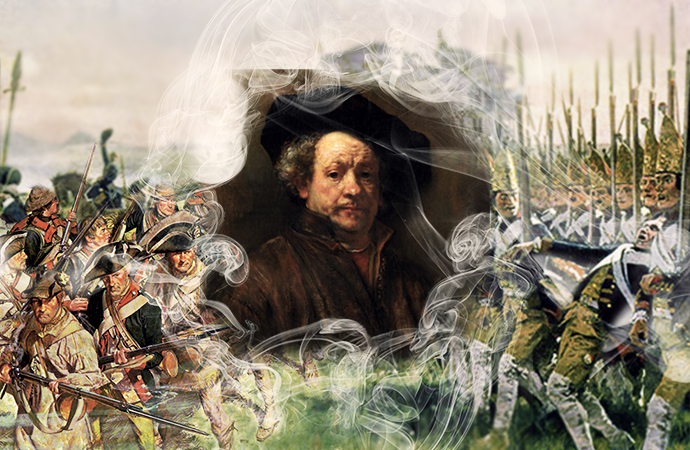A tale of art, science, and wars
The art

It is the year 1670. Gerard ter Borch is working on his portrait of Nicolas Pancras, mayor of Amsterdam, when Charles II of England signs the Treaty of Dover, agreeing to support an attack on the Dutch Republic by Louis XIV of France. The Third Anglo-Dutch War is about to start and lead—an essential element for achieving white shades in paintings—becomes scarce because it is needed for armament and ammunition. Most probably, ter Borch needs to utilize lead white manufactured in other places, different from the one he used to get from his provider to continue painting. This could have happened to many European artists at the time.
But how do we know about this relationship between wars and pigments from old paintings?
The answer is hidden in the elements’ atomic nuclei.
A research group based at the Vrije University, Rijksmuseum, and the University of Amsterdam led by Paolo D’Imporzano investigated seventy-seven paintings by twenty-seven different Golden Age Dutch artists (from 1588 to 1700). They identified lead isotopes in the paintings and discovered significant changes in the isotope composition of the lead white pigment.
For centuries, lead white was the favorite choice for artists for the warmest masstone and almost unnoticeable undertones it offered. It was also the fastest drying of all of the whites in oil. In the 17th century, The Netherlands was a major international producer of lead white and artists used it until its manufacture and sale were restricted for its poisonous properties in the 19th century.
The science
The lead white used by the Dutch painters was mainly manufactured from the minerals cerussite (PBCO3) and hydrocerussite (2PbCO3·Pb(OH)2), which can contain up to 80% lead.
Paolo D’Imporzano and collaborators analyzed four stable lead isotopes (204Pb, 206Pb, 207Pb, and 208Pb) and three radiogenic ones (206Pb, 207Pb, and 208Pb) produced by the radioactive decay of uranium and thorium (238U, 235U, and 232Th) in the lead white used in the Dutch masterpieces.

Geologists can identify where the lead was mined by analyzing radiogenic lead isotope contents in pigments. Upon extraction by smelting, the mineral retains the isotopic proportion of the original ore. Uranium/lead and thorium/lead ratios reflect the distinct times of formation of the ore deposits because radioactive decay works as a clock.
By examining the physical and chemical properties of the paints, it is possible to determine how they were produced and the regions where they were manufactured in Europe.
Their article, recently published in Science Advances, argues that it is possible to trace socio-economic events and conflicts across Europe using this method of chemical analysis of old paintings.
The wars
Paolo D’Imporzano and collaborators investigated the supply chain that provided the pigments to the Dutch artists in the 1600s, mapping the times of distress in Europe when lead white became scarce and artists probably needed to change providers or manufacturers.
The changes identified in the lead isotopic content in the Golden Age paintings coincide with major events in Europe that may have influenced the supply chain.
(i) The increasing demand for lead in everyday life and warfare. By that time, England was the principal lead producer and its production was growing fast, causing changes in the market. However, the English Civil War (1642–1651) affected the English dominance in the lead production and trading market. This may be reflected in the differences between the lead white isotopic composition of Dutch paintings dated 1642 and those from five years later. The scientist observed a transition period in the isotope ratios until they reached an equilibrium in 1647–1680.
(ii) The signing of the Munster Peace Treaty that ended the Eighty Years War in 1648, when the Dutch Republic was recognized as independent, would have led to trading agreements and potential changes in lead availability.
(iii) Third Anglo-Dutch War (1672–1674) and the Franco-Dutch War (1672–1678). During these periods, the scientists observed high variations in isotopic contents, which could be related to alterations in the supply routes of lead due to its high demand for producing armaments and ammunition. The researchers reported having found these differences, for example, in paintings by ter Borch (1670) and Post (1675).
In 1672, troops from Cologne and Münster occupied Deventer, forcing Gerard ter Borch—who didn’t want to surrender—to flee to Amsterdam. Did he need to change his lead white paints to continue with his masterpieces? Probably yes.
References
D’Imporzano, P., Keune, K., Koornneef, J. M., Hermens, E., Noble, P., Vandivere, A. L. S., & Davies, G. R. (2021). Time-dependent variation of lead isotopes of lead white in 17th century Dutch paintings. Science Advances, 7(49). https://doi.org/10.1126/sciadv.abi5905
featured illustration by Dana Dumea.


